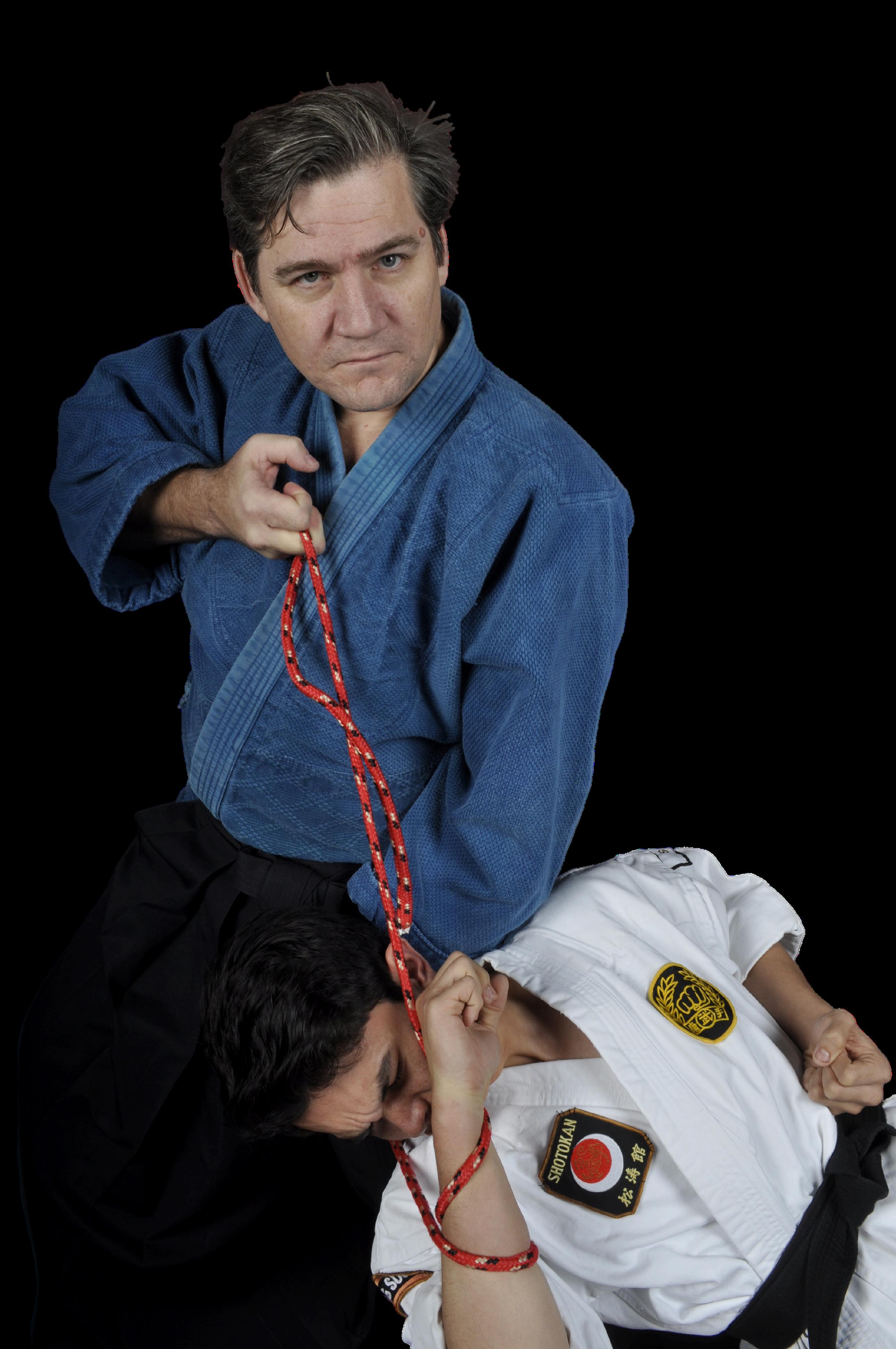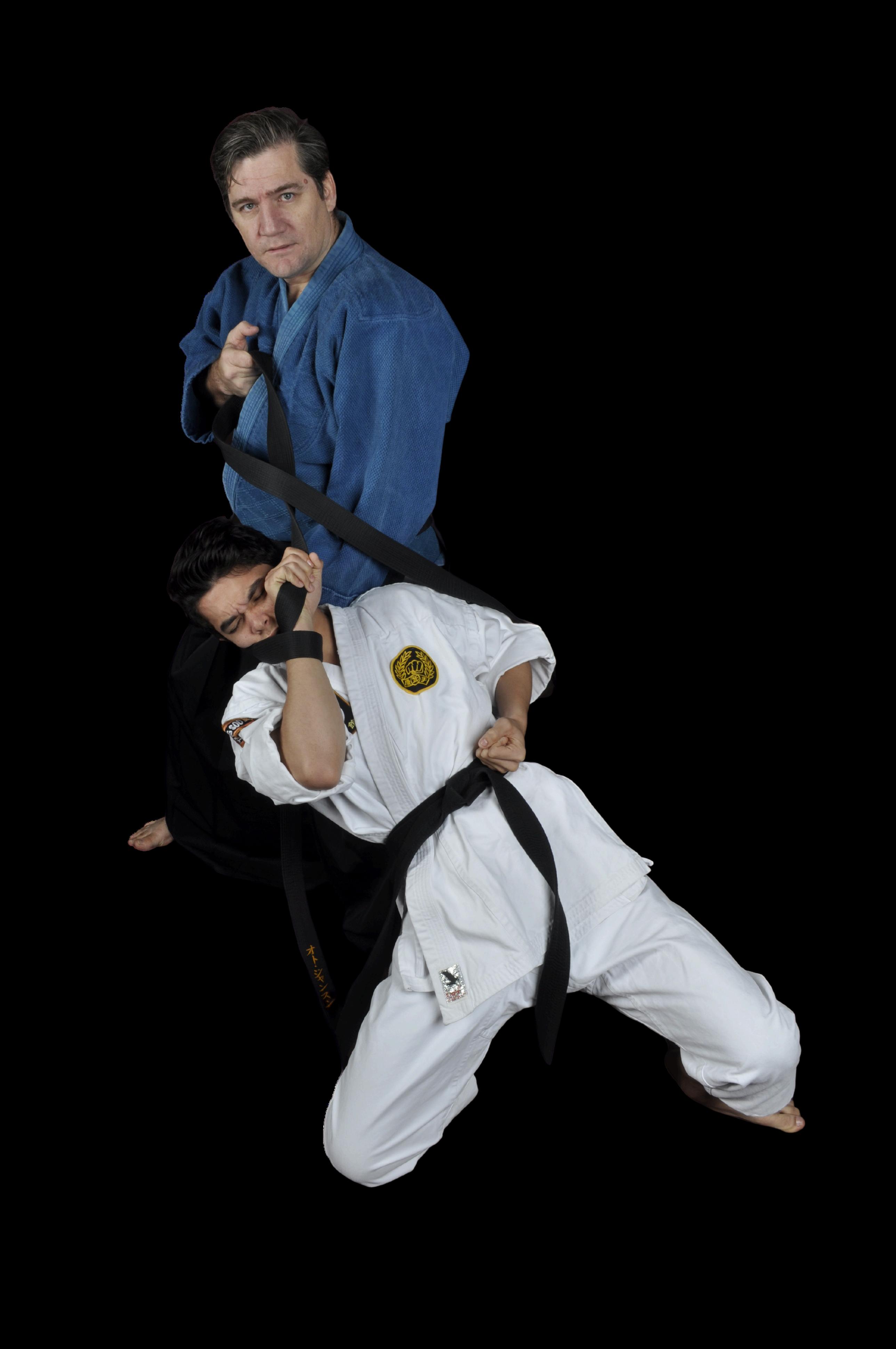
5 minute read
HOJOJUTSU The Forgotten Art
By Allen Woodman
In the intricate weave of Japan's martial arts tapestry, Hojojutsu occupies a unique and fascinating strand.
This traditional form of rope bondage has roots deeply embedded in the feudal era, serving as a testament to the ingenuity and cultural distinctiveness of Japanese martial practices. Its evolution, principles, and application provide a riveting narrative, showcasing not just a martial art, but a historical artifact that has survived the relentless march of time.
Shihan Allen Woodman has trained extensively in several schools of theory in this art form. Having lived and trained in Japan for more than 20 years, Allen brings a unique perspective to the training and application of traditional Hojojutsu

Hojojutsu began its journey during Japan's feudal period, a time when warriors sought not only to defeat their enemies but to capture them with honor.
The art's genesis can be traced back to the samurai, who valued the capture of high-ranking adversaries alive to either ransom them or hold them for political leverage As such, hojojutsu emerged as a critical skill on the battlefield, enabling the samurai to subdue and restrain without causing unnecessary harm
The transition from the battlefield to civil society saw hojojutsu adapting to the needs of peacekeeping. During the Edo period (1603–1868),
Japan experienced an era of relative peace under the Tokugawa shogunate. This period allowed the martial arts to flourish, with hojojutsu being employed by law enforcement officers, known as 'torimono sandogasa,' to arrest and detain without lethal force.
The use of rope, an easily accessible and versatile tool, made hojojutsu a practical choice for these officers
The Art and Science of Restraint*
Hojojutsu is characterized by its strategic application, which reflects a profound understanding of human anatomy and psychology. Practitioners, known as hojojutsuka, employ various lengths and types of rope to execute techniques that can neutralize an opponent swiftly and efficiently.
The art is divided into two main categories: hayanawa (fast rope), used for quick capture and immobilization, and honnawa (main rope), intended for more secure and long-term restraint. and human insight.
The practice of hojojutsu is as much an art as it is a science. Its techniques are meticulously designed to respect the captured person's dignity while ensuring they remain incapacitated.
This duality of purpose—simultaneous restraint and respect—mirrors the samurai code of ethics and underscores the cultural depth of hojojutsu.
Hojojutsu Today.
Although no longer employed in law enforcement or warfare, hojojutsu has not vanished into the annals of history.
Instead, it has transitioned into a ceremonial and educational practice, preserved by martial arts historians and enthusiasts who recognize its cultural and historical significance.
Modern practitioners’ study hojojutsu not only for its physical techniques but also to gain insight into the feudal Japanese mindset and the era's social order.
As a martial art, hojojutsu offers a captivating glimpse into Japan's past, reflecting the ingenuity, discipline, and artistry of the samurai.
IIts survival and continued practice stand as a tribute to the timeless values of respect, restraint, and honor —principles that transcend the boundaries of time and culture.
Hojojutsu may no longer echo on the battlefields or in the streets of Edo, but its legacy endures, woven into the very fabric of Japan's martial heritage.
For those who seek to understand the soul of samurai culture, hojojutsu offers a thread that, once pulled, unravels narrative rich with history, art, and profound human insight.
Unveiling the Art
In the traditional Art of Hojojutsu each discipline holds its unique charm and complexity, therein lies an art form shrouded in mystery and exclusivity.
Traditionally guarded and passed down within the confines of separate schools to protect its techniques from falling into rival hands, Hojojutsu has remained elusive to the broader martial arts community. However, Shihan Allen Woodman, a revered figure in the martial world, is bringing this ancient art to the forefront, teaching the defensive, fast-rope (hayanawa) system of Hojojutsu in a manner that is as innovative as it is accessible.
A Legacy Guarded, Now Shared
Originally, Hojojutsu was conceived as a method to restrain attacking enemies, with specific knots and ties designed to keep the techniques secret from adversaries. This ensured that if a samurai were captured, their captors would not readily understand how to undo the bindings, giving the samurai a possible chance to escape. Because of its strategic importance, Hojojutsu was closely guarded within schools, creating a veil of secrecy around the art form.

About the Author
As a modern ambassador of Hojojutsu, Woodman carries forward the legacy of an art steeped in the samurai tradition His innovative approach melding meticulous historical research with practical application has ignited a renewed interest in Hojojutsu.
Under his tutelage, practitioners find themselves engaged in more than just learning a martial art; they embark on a journey through time, exploring the rich tapestry of feudal Japan and the timeless virtues of the samurai spirit.
Beyond the mats and dojos, Woodman's influence permeates through his writings and instructional videos, offering enthusiasts worldwide a chance to dive into the intricacies of Hojojutsu
In the dynamic world of martial arts, Shihan Allen Woodman stands as a pillar of tradition, bridging the past and present through the art of Hojojutsu His story is not just about the revival of an ancient art; it's about inspiring a new generation Lessons of respect, discipline, and the graceful power of the binding art
For more info check out hojojutsu.yourwebsitespace.com











